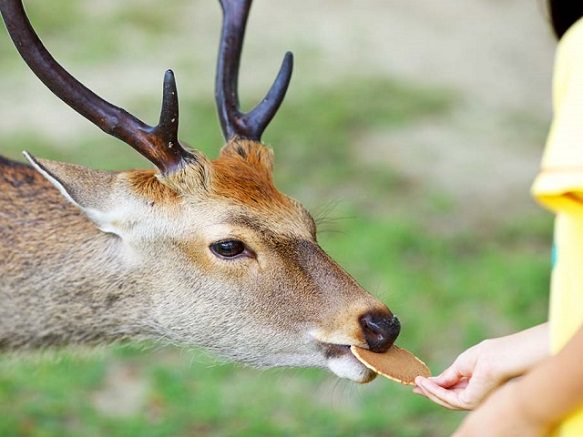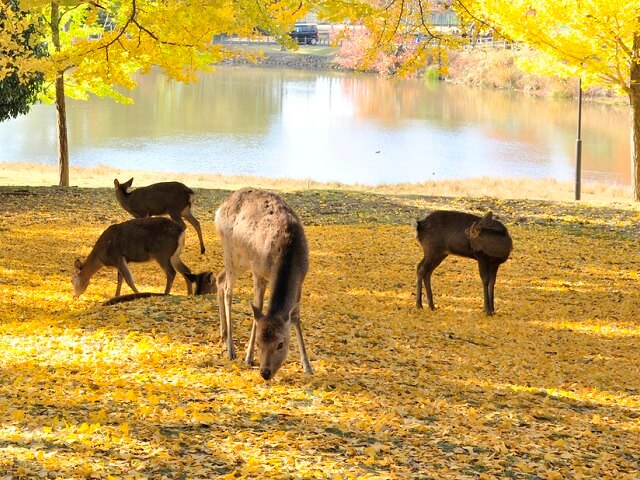-
- USA/Canada 1-800-285-2726
- Australia (02) 8006 4411


Nara Park, popularly called the Deer Park, is a public park in central Nara where deer roam freely along the grounds. The deer attract numerous visitors and tourists to the park, and will often approach guests in hopes of a treat. There are approximately 1,100 tame deer roaming around the park grounds. According to Japanese mythology, the deer are regarded as divine messengers of the Kasuga Shrine in Shinto.
In the park are several vendors selling "senbei" or crackers meant specificly for the deer to enjoy. The deer at Nara Park are friendly for the most part, but can get aggressive at times so visitors should be cautious when feeding them. In some cases, the deer will chase tourists down in hopes to get a treat. On the other hand, some deer will bow at the sight of visitors as a sign of appreciation for treats, so be sure to keep an eye out for that!

In addition to being a home for thousands of deer, Nara Park is also a natural woodland of fine turf and has various kinds of Japanese flowers and trees including: Japanese cedar, Wisteria, Japanese Andromeda, and Japanese yew trees.
The park grounds are also adjacent to the historic Todaiji Temple, so be sure to greet the Great Buddha during your time in Nara.
Get the chance to feed these furry friends in Nara during one of our fully-escorted Cherry Blossom Japan Tours or during our Highlights Japan Tour packages available year-round. You can also opt to customize your own vacation package with our Custom Japan Tours to create the ultimate experience through Japan!
National Treasure Great Buddha; one of the world's largest bronze statues
A small town with a long history, Nara is a place of historical significance
One of the Seven Great Temples of Japan
Learn about sake brewing and its history then taste traditional sake
Displays works of Buddhist art, scrolls, statues, paintings and more
Kasuga Grand Shrine Dedicated to Gods of Nara's Protection
Five-Story Pagoda - One of the oldest wooden buildings
Said to be the oldest shrine in Japan, having already been active sometime in 250-538